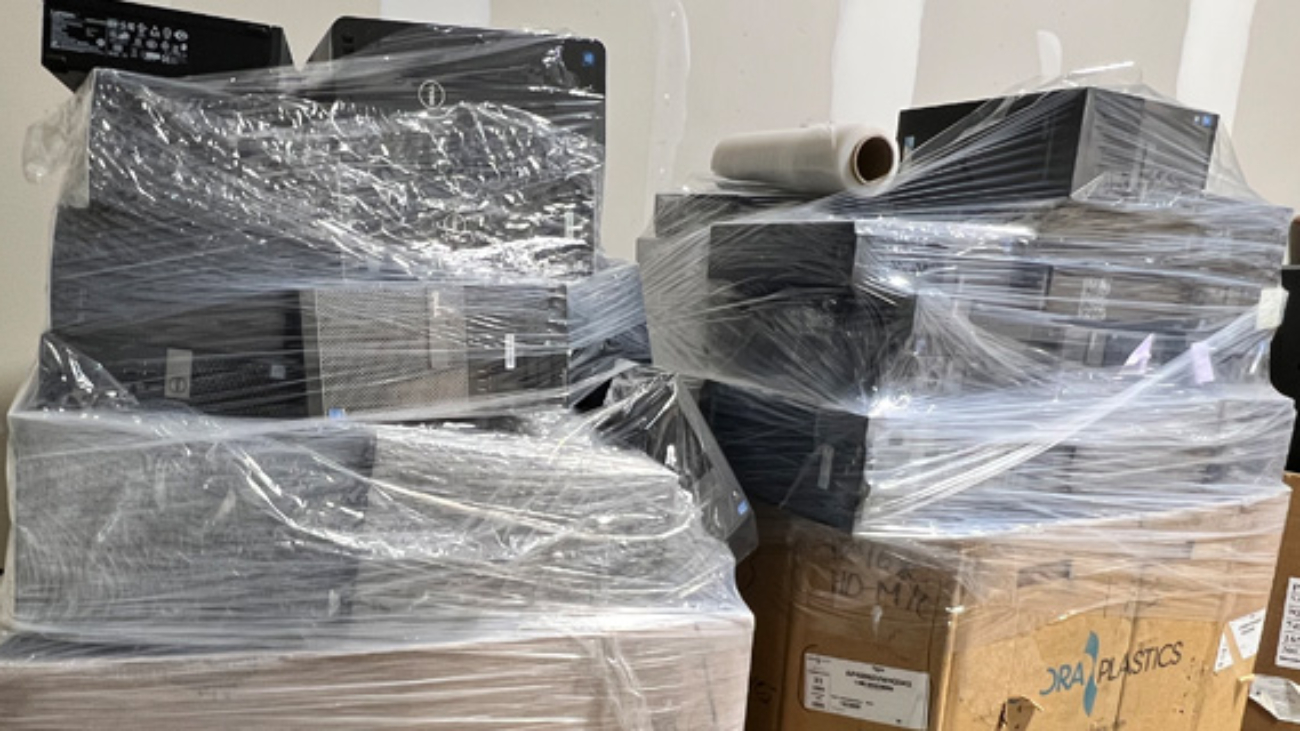Looking for an e-waste definition that makes sense? Understanding electronic waste, its environmental impacts, and how your stewardship is crucial to responsible e-waste recycling will help keep toxins and rare earth metals out of landfills and clean water sources.

New Life Technology Group gathered information to help define e-waste, understand its environmental repercussions, and provide a sensible approach to how you can responsibly recycle it.
E-Waste Definition
E-waste refers to discarded electronic devices or appliances, including computers, smartphones, tablets, televisions, printers, and kitchen appliances. These devices often contain hazardous materials such as lead, mercury, cadmium, and brominated flame retardants, which pose severe risks to human health and the environment if not properly managed.
Examples of E-Waste
E-waste devices include, but are not limited to:
Smartphones and Tablets – With the rapid pace of technological innovation, many users frequently upgrade their smartphones and tablets, leading to the disposal of older devices.
Computers and Laptops – As technology evolves, older computers and laptops become obsolete, contributing to the accumulation of e-waste.

Televisions and Monitors – With the shift to flat-screen televisions and monitors, older cathode ray tube (CRT) TVs and monitors are often discarded, adding to e-waste volumes.
Home Appliances – Kitchen appliances such as refrigerators, microwaves, and washing machines contain electronic components and become e-waste at the end of their lifespan.
Electronic Waste – Negative Environmental Impacts
E-waste poses significant environmental challenges due to the toxic substances contained within electronic devices. Improper disposal methods, such as landfilling or incineration, can release harmful chemicals into the air, soil, and waterways. Some e-waste environmental impacts include:
Soil and Water Contamination – Hazardous substances from e-waste can leach into the soil and water, contaminating ecosystems and posing risks to plant and animal life.
Air Pollution – Burning e-waste releases toxic fumes and particulate matter into the air, contributing to air pollution and respiratory problems in humans.
Resource Depletion – Electronics contain valuable materials such as gold, silver, copper, and rare earth metals. Failure to recycle these materials leads to resource depletion and increased demand for new raw materials, exacerbating environmental degradation.
Health Risks – Exposure to hazardous substances found in e-waste, such as lead and mercury, can lead to serious health issues, including neurological disorders, respiratory problems, and reproductive harm.
Watch this video for further clarity on how e-waste negatively impacts our ecosystem and what can be done to keep it out of landfills.
Environmental Stewardship – Responsible Disposal of E-Waste
Environmental stewardship is the responsibility for environmental quality shared by all individuals whose actions benefit or adversely affect the environment. This responsibility is a value reflected through individual, company, community, and government organization choices shaped by unique environmental, social, and economic interests. Consider the following for electronic waste disposal:
Reuse and Donate – Donate functional electronic devices to charities, schools, or community organizations. Many organizations accept donations of used electronics for refurbishment and reuse.
Recycling Programs – Look for certified e-waste recycling programs in your area. These programs ensure that electronic devices are recycled in an environmentally responsible manner, with hazardous materials properly handled and recovered for reuse.
Manufacturer Take-back Programs – Some electronics manufacturers offer take-back programs accepting old devices for recycling or proper disposal. Check with the manufacturer of your electronic device to see if they offer such a program.
E-Waste Collection Events – Many communities organize e-waste collection events where residents can drop off their old electronics for recycling. Check local government websites or community organizations for information about upcoming collection events in your area.

Certified E-Waste Recyclers – When choosing where to dispose of old electronics, opt for e-waste recyclers who adhere to environmental and safety standards. Look for certifications such as R2 (Responsible Recycling) or e-Stewards to ensure responsible handling of e-waste.
Read more about environmental stewardship and how e-waste is collected and repurposed at newlifetechgroup.com/itad-sustainable-technology-and-environmental-stewardship
Watch this video to see how this nonprofit e-waste recycler collects and processes your donated electronic devices.
Electronic Waste
In this article, you discovered a definition and examples of electronic waste, how it impacts the environment, and its responsible disposal.
Responsible electronic waste disposal is fundamental to everyone’s commitment to environmental stewardship, cleaner water, and less contaminated soil.
Failure to responsibly recycle your electronic waste adds to rare-earth metal depletion, growing soil and water contamination, and more unhealthy air pollution.
Sources:
who.int/news-room/fact-sheets/detail/electronic-waste-(e-waste)
dtsc.ca.gov/electronic-hazardous-waste/
noaa.gov/office-education/noaa-education-council/monitoring-resources/common-measure-definitions/stewardship-definitions
jmu.edu/stewardship/what-is-environmental-stewardship.shtml

